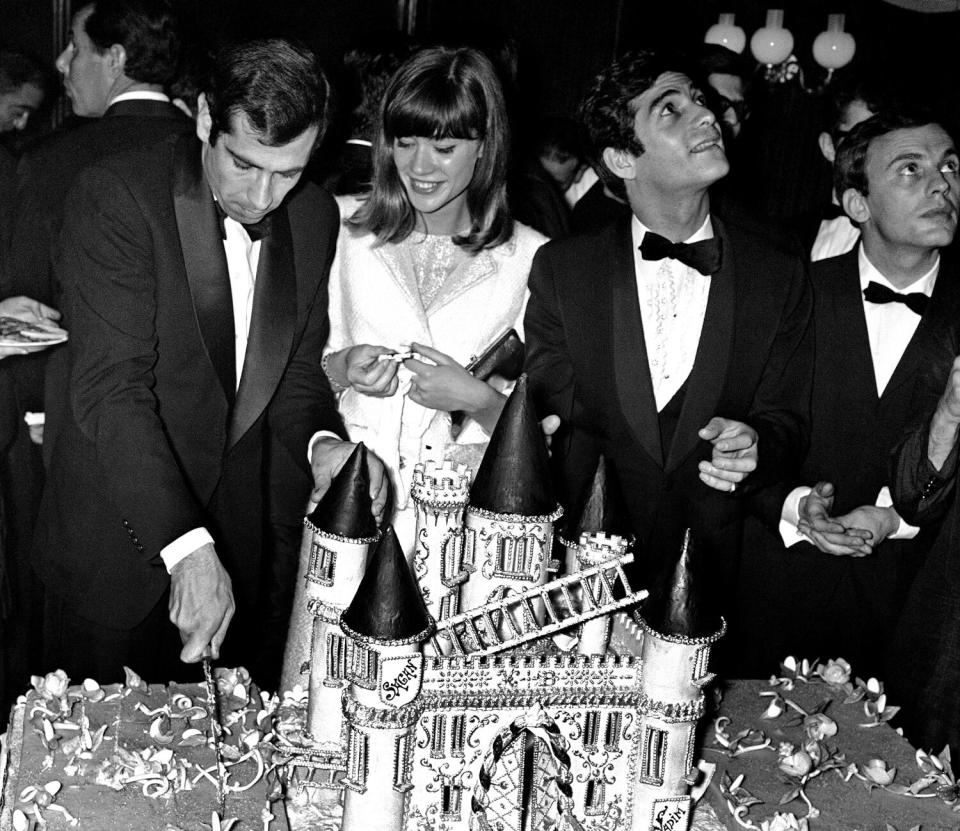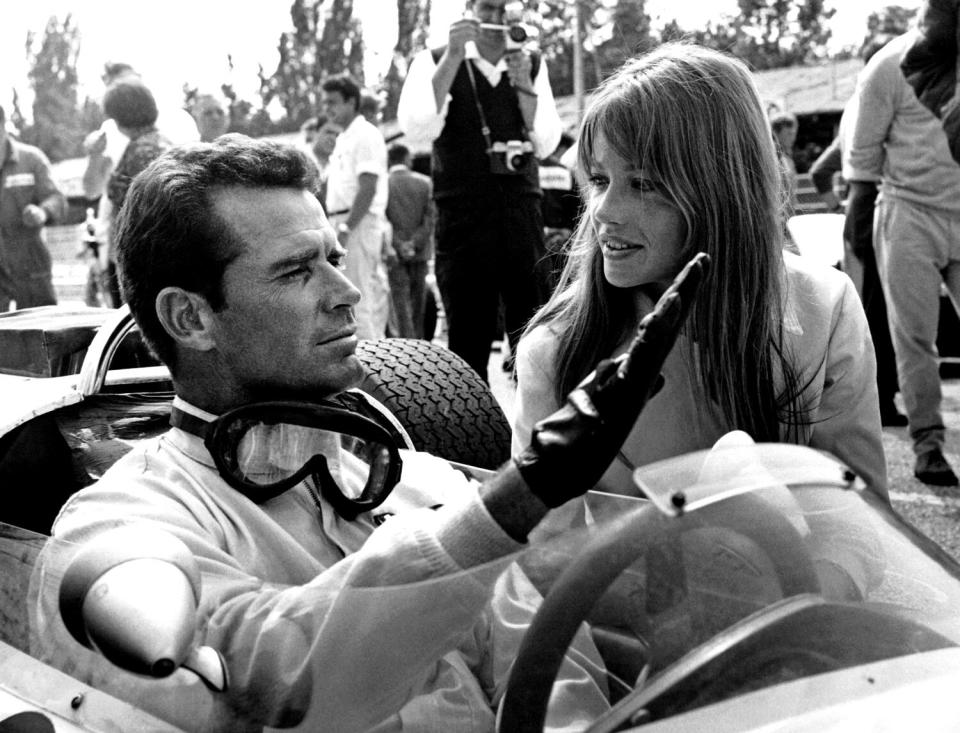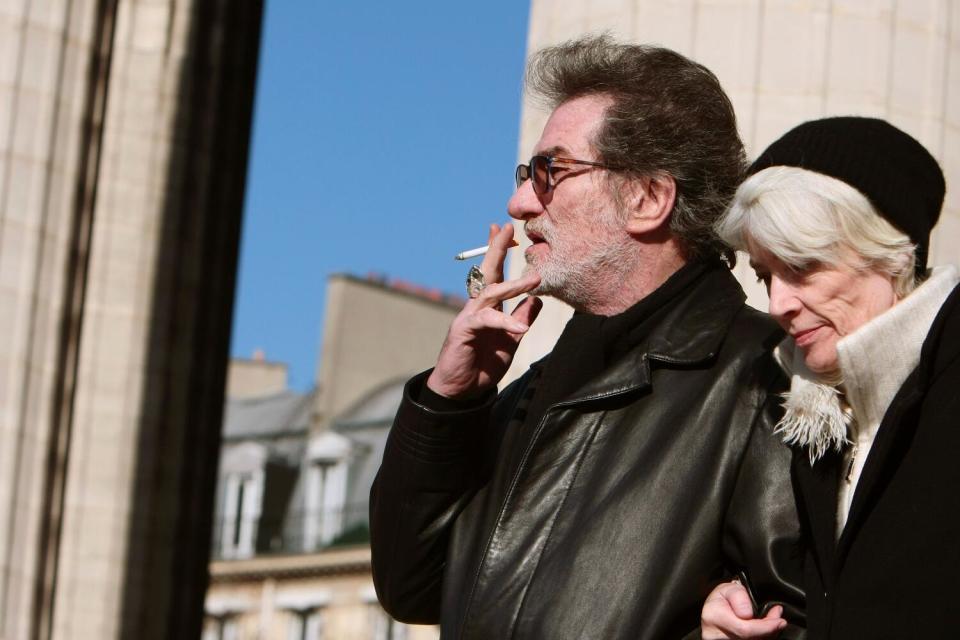Françoise Hardy, French pop star and fashion icon, dies at 80

Françoise Hardy, the French chanson singer, songwriter, fashion "It Girl" and darling of the 1960s “yé-yé” French pop movement, has died. She was 80.
Her death was announced Tuesday on Instagram by her son, Thomas Dutronc, who wrote, “Maman est partie” — “Mom is gone” in French — without specifying when or where she died. Hardy said in 2004 that she’d been diagnosed with lymphoma.
A superstar in Paris by the time she turned 20, Hardy released her debut single, “Tous les Garçons et les Filles” ("All the Boys and Girls"), in 1962. Across the following decades, she issued more than 30 studio albums, a body of work that was briefly interrupted by a late 1980s retirement.
Though hardly a household name in America — she sang most of her hits in her native tongue — Hardy was a phenomenon in her homeland, regarded both for her minor-key lyricism and her delicate delivery. She followed her first hit with “Le Temps de L’amour” ("The Time of Love"), which featured spacious, echoed production that captured the spirit of Gene Pitney's sessions with Phil Spector. Songs including "La Maison Où J'ai Grandi" ("The House Where I Grew Up") and "Comment te Dire Adieu" ("How to Say Goodbye to You") pondered the absence of love and, once present, the futility of keeping it.

"In music, I like above all the slow, sad melodies, that stir the knife in the wound. Not in a way that plunges, but in a way that uplifts,” Hardy said, according to Frédéric Quinonero's 2017 biography. “I still aspire to find the heartbreaking melody that will bring tears to my eyes. A melody whose quality gives it a sacred dimension."
Often dismissed as an artist at the time due to her gender and beauty — a 1967 Reuters article identified her as “France’s sexy long-haired, mini-skirted singing idol” — Hardy drew on her skills as a writer and interpreter to render moot such simplistic descriptions. Her looks and charisma, however, did draw the attention of musicians such as Bob Dylan, the Rolling Stones’ Brian Jones and the French singer Jacques Dutronc.
Many baby boomer music fans, in fact, learned of Hardy not through song but by reading a Dylan poem on the back of his 1964 album, “Another Side of Bob Dylan,” where the seemingly smitten Minnesota bard wrote (in lowercase), “for françoise hardy / at the seine’s edge / a giant shadow / of notre dame / seeks t’ grab my foot / sorbonne students / whirl by on thin bicycles...”
Hardy harnessed her early-1960s singing and songwriting success to become a renowned fashion icon, astrologer and published author. She also appeared in several films, including "Château en Suède" (1963), "What’s New Pussycat?" (1965) and "Grand Prix" (1966). As the decades progressed, her muse pushed her away from the commercially driven yé-yé sound toward pop-focused psychedelia, folk-rock and meditative adult pop.
“From when she was 18, she knew she was different,” producer Erick Benzi, who collaborated with Hardy for two decades, told Uncut in 2018. “She was capable of going in front of big artists like Charles Aznavour and saying, ‘Your song is crap, I don’t want to sing it.’ She never made compromises.”

Born Jan. 17, 1944, during an air raid amid the final months of Germany’s occupation of France during World War II, Hardy was conceived through an affair between her mother and a much older, well-to-do married man. Her only sibling, sister Michele, arrived a year later.
Despite excelling at school and having a father from a higher social status, Hardy faced an adulthood similar to those of her middle-class peers. At one point as a teen, she recalled in her 2008 memoir, "The Despair of Monkeys and Other Trifles" (published in the U.S. in 2018), “my mother and I conjured up all the realistic careers open to me: executive secretary, medical secretary, nurse, pharmacist." She added: "In secret I was nurturing the ambition of finding an activity with some connections to the musical style I had recently fallen for.”
When she was a teenager, as a reward for academic success, Hardy's mother and father offered her a gift of her own choosing. She wavered between a radio and a guitar before going with the latter. “I will never know why I chose a guitar because a transistor radio was all I ever wanted,” she told the Guardian. “My future life would flow out of this crucial choice because, once I had this precious instrument in my hands, I started scratching out three chords over which I sang snatches of my own melodies.”
Alongside peers including Jane Birkin, Brigitte Bardot, France Gall and Sylvie Vartan, Hardy ascended to become a yé-yé hitmaker in her native Paris, drawing the attention of jet-setting pop stars, tastemakers and fashionistas from London, New York and Tokyo. As with other yé-yé singers, Hardy's music blended mid-1960s bubblegum pop, groovy guitar lines and France's romantic chanson tradition to create sticky-sweet love songs.
Hardy first visited Los Angeles in 1968 to record her English-language album “En Anglais” ("In English") — although she had appeared onscreen at the Cinerama Dome two years earlier in John Frankenheimer's race car movie "Grand Prix” — but never seemed too concerned with stateside success. It didn't help that she suffered from stage fright.

Her commanding presence drew the attention of the Paris fashion scene and she became a muse to designers such as André Courrèges, Emmanuelle Khanh and Yves Saint Laurent. Current Louis Vuitton creative director Nicolas Ghesquière called Hardy “the very essence of French style,” a trait apparent in the cover photos of Hardy's first four albums, which were shot by fashion photographer (and then-boyfriend) Jean-Marie Périer.
"My songs had little interest compared to the Anglo-Saxon production. So I took it to heart to dress well every time I went to London or New York," she told Vanity Fair in 2018, calling herself "above all a fashion ambassador."
In the late 1960s, Hardy and Jacques Dutronc began a relationship that would last the rest of their lives. Their son, Thomas Dutronc, now a successful French singer, was born in 1973, and Hardy raised him as she continued to release some of her most expansive albums. The title track to ’73's "Message Personnel" ("Personal Message") is a gentle exploration of unrequited love and unspoken emotions lush with orchestral arrangements.
Read more: The 24 best songs of 2024 so far
Hardy and Dutronc married in 1981 — purely for fiscal reasons, both stressed — but separated in 1988. Despite entering into other relationships, they never divorced and remained close. Her extended family life had its share of tragedy. According to Hardy's memoir, in 1981 her father, with whom she had had little contact, was killed in his home by a male prostitute. As she also conveyed in her memoir, in the mid-2000s, her sister, who had long struggled with mental illness, died. Though the police investigation never officially confirmed the cause, Hardy believed her sister died by suicide.
Commercial success afforded Hardy the opportunity and time to fully explore her creativity; one main avenue was astrology. Introduced to the belief system in the 1960s, she immersed herself in the various schools of thought, ultimately studying with French writer Jean-Pierre Nicola. Using her fame to advocate for his methods, she eventually became the daily horoscope reader on Radio Monte Carlo. She released her astrology book "Les Rythmes du Zodiaque" ("Rhythms of the Zodiac") in 2003.
Hardy published her first work of fiction, "L'Amour Fou" ("Crazy Love") in 2012. Written as a companion to an album of the same name, its success kept her writing. Two books of essays followed in 2015 and 2016.
Hardy's statements on politics drew ire from French liberals in 2012 when she stated that if Socialist Party candidate François Hollande were able to initiate his proposed 75% tax on millionaires, Hardy would "have to sell my apartment," adding, "I’ll be on the street.”
Hardy lived long enough to see her recordings rediscovered by a new generation of listeners. She sang on a remix of the Britpop band Blur's 1994 song "To the End," and continued to release albums and collaborate with others for the rest of her life. In 2015, the respected archival label Light in the Attic reissued her first four albums. in 2021, Hardy and the French house group Bon Entendeur released an updated version of her early hit "Le Temps de L’amour."
“No one can sing like Françoise," Iggy Pop said in 1997 as he and Hardy were promoting their version of "I'll Be Seeing You." "Her emotional and musical accuracy combined with her sense of reserve and mystique make an indelible and very French impact on the listener. There's no one else as good around.”

“It has always been a big surprise to me that people, even very good musicians, were moved by my voice,” Hardy told the Guardian. “I know its limitations, I always have. But I have chosen carefully. What a person sings is an expression of what they are. Luckily for me, the most beautiful songs are not happy songs. The songs we remember are the sad, romantic songs.”
Hardy, who survived lymphatic cancer in the mid-2000s, was diagnosed with a malignant tumor in her ear in 2018. Later that year, she explained her situation in an email to the French magazine Femme Actuelle: “My physical suffering has already been so terrible that I am afraid that death will force me to go through even more physical suffering."
Arguing on behalf of her right to die, she wrote: “It is not for the doctors to accede to each request, but to shorten the unnecessary suffering of an incurable disease from the moment it becomes unbearable.”
For an artist long drawn to the ways in which people cope with grief and sadness, her plight seemed aligned with the themes of her music.
"I sing about death in a very symbolic and even positive way. There is an acceptance there, too," she told the Guardian. "At my age, I can really only sing about that one very special train that will take me out of this world. But, of course, I am also hoping that it will send me to the stars and help me discover the mystery of the cosmos.”
Hardy is survived by her husband and their son.
This story originally appeared in Los Angeles Times.


